2013 National Health Research Forum
Straight Talk About the Future of Medical and Health Research
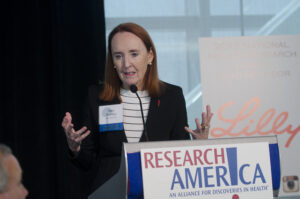
Research!America’s National Health Research Forum – held September 12 at the Newseum’s Knight Conference Center in Washington, DC – examined the current and future state of research to improve health. This year’s theme was “Straight Talk about the Future of Medical and Health Research.” Three expert panels delved into different aspects of the research ecosystem.
Research!America’s president and CEO, Mary Woolley, and chair, The Honorable John Edward Porter, opened the program. Porter introduced Bart Peterson, JD, senior vice president of corporate affairs and communications at Lilly who delivered a brief keynote speech.
“We developed an innovation ecosystem, and that ecosystem requires sound public policy. From the private sector perspective, that includes solid intellectual property protection; a fair, rigorous, transparent regulatory system; a market system of health care delivery and pricing that offers choice for patients and health care providers,” Peterson said. “But the public sector has a role far beyond just producing sound public policy … Public funding for research, which is so threatened today, is absolutely critical to the future and we care about that as much from the private sector perspective as anybody else does.”
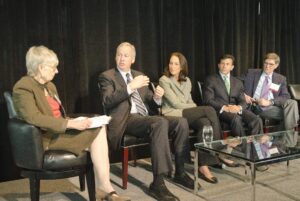
The first panel, focusing on biomedical research and development, was moderated by journalist Eleanor Clift of Newsweek and the Daily Beast and featured John Crowley, president and CEO of Amicus Therapeutics and a patient advocate; William Hait, MD, PhD, global head of R&D at Janssen Pharmaceuticals; Margaret Hamburg, MD, commissioner of the Food and Drug Administration (FDA); and Peterson. The discussion centered on innovation within the pharmaceutical industry and the relationship between companies and regulators.
When Clift asked about the challenges facing the FDA,Hamburg expanded it to focus on the agency’s role within the broader ecosystem.
“Our role is not only to work with the scientific community both in academia and in industry to really identify where are the promises in science and technology today and how we can leverage them into real-world products,” Hamburg said. “How can we do the research from the very beginning in ways that support the regulatory requirements and enable us to really make the best use of now increasingly limited dollars as we build on discoveries and move them across the finish line into the products that matter for people?”
Peterson lauded the FDA for its work on improving relations with the industry. ” I think there has been a lot of progress,” he said.”The number of [drug] approvals has significantly gone up each year in the last several years.”
Hait, a Research!America Board member, saw positives with the FDA’s recent identification of breakthrough therapies. He said that one of Janssen’s drugs will probably be approved two years earlier than anticipated because it had received the breakthrough indication.
More plaudits came from Crowley, who remembered his journey to becoming a biotech entrepreneur. Frustrated with the pace of R&D efforts into Pompe disease, which affected two of his children, while running a nonprofit, Crowley jumped into building his own company. That led into a discussion of partnerships; Peterson said that collaboration between industry and academia is critical to the industry – which is why funding levels at the National Institutes of Health (NIH) are critical to all medical research in this country – but collaboration between companies has its limits. Multiple companies can partner with each other but, at some point, they eventually become competitors.
Crowley added that, during his experience, he and his team spent an enormous amount of time trying to harmonize the views of various hospital review boards. In one instance, a Phase 3 clinical trial required patients of a specific type; to find 60 of them, Crowley’s company went to 37 different countries and dealt with 60 different review boards. In all, it took two years to complete that work alone – “far more energy and cost than we spent with the government regulators,” he said.
Hamburg pointed out that funding cuts have been detrimental to FDA, especially as sequestration relates to industry-paid user fees. “It was an unexpected and unfortunate hit,” she said. “People are stretched very thin.” She added that the heavy workload could lead to a loss of talented workers.
Hait later pointed out the effects of Richard Nixon’s War on Cancer: Now, four decades later, fruit is being borne from that investment (and subsequent years of investment) into cancer research. One example Hait cited:the growing array of cancer drugs that are less toxic than chemotherapy.
Peterson explained that patients are playing a never-increasing role in the development of therapies. “Patients were somewhat dismissed as being not sophisticated enough,” he said. “This is not true anymore. Patient advocacy groups have become very sophisticated, very much at the cutting edge of scientific research.”
Crowley also stressed the importance of encouraging risk and innovation.
“The challenge has been since 2008, 2009-the financial crisis, so many changes in the world-that we’ve had a risk-off mentality,”Crowley said. “And that really shook the foundations of biomedical research.”
Hait expressed concern about the possibility of losing a generation of researchers. “These people who come and train don’t see [medical research] as a career,” he said. “If you lose these kids who are so smart and so talented, who’s going to be the next generation that continues to spur on biomedical research and the prevention and cures we seek in this country?”
One aid in doing that could be Hamburg’s leadership for a comprehensive national strategy to overhaul the ecosystem. “My goal as FDA commissioner is to help make sure we are delivering on the promises of science and technology, and today I see [putting a national strategy in place] as part of my mission even though many of the pieces of this ecosystem … are far outside our area of activity [but essential to it].”
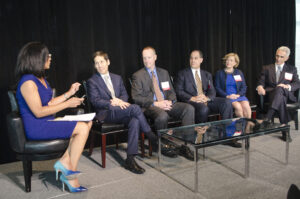
The second panel, which focused on tackling persistent public health challenges, was moderated by Michelle Miller, CBS News correspondent. Panelists were Patrick Conway, MD, of the Centers for Medicare& Medicaid Services (CMS); Tom Frieden, MD, MPH, director of the Centers for Disease Control and Prevention (CDC); Jay Gershen, DDS, PhD, president of Northeast Ohio Medical University; Foti Panagakos, DMD, PhD, global director of scientific affairs at Colgate-Palmolive; and Lisa Simpson, MB, BCh, MPH,president and CEO of Academy Health.
Frieden began by discussing what he sees as a primary concern about public health: that it’s not visible to the public. Heart attacks and strokes are very visible, of course, but far fewer think about heart attacks and strokes that have been prevented.
“[Prevention] is truly the best buy in the healthcare system,” Frieden said.
Frieden later added that it’s necessary to have higher-value”health return on our health investment.” One way that’s happening is by taking successful lessons from health insurance companies across the country and applying those lessons to ensure better health outcomes; control of high blood pressure, for instance.
Panagakos pointed out an example from his specialty:Thousands of people turn to their hospital’s emergency room for a dental abscess; a small percentage – but not zero – actually die in precisely this circumstance. He felt that people that most needed prevention efforts were not taking advantage of those efforts, possibly because they’re not aware of them.
At CMS, Conway said the agency is actively trying to get the word out about prevention programs through any number of channels: through CMS itself, or through a state or local entity or university or research organization, even down to individual clinicians. “With our quality measurement programs and our payment programs, we’re trying to incentivize prevention and coordination of care,” he added.
Gershen, a Research!America Board member, also honed in on dentistry. People of and past retirement age have spent a lifetime using dental insurance to ensure their oral health; but without a job – and likely without robust health insurance – those efforts cease. “So those who have insurance go through a lifetime of building up their dentition and they lose it over the last 20 years of their life because they can’t pay for the services,” he added. Panagakos said that the focus has rightly been on pediatric health, but the “silver tsunami” is already here as life expectancy continues to rise, creating a significant financial burden.
Simpson made the case for continued support for health services research; the U.S. Preventive Services Task Force, for instance, helps to bridge the gap between biomedical research and reliable care. She added that it will be up to the research ecosystem to provide the best care possible.
“For all the innovation, for all the resources we do have,we do not deliver what we could,” she said. “And so I think we really need to commit to working together to have all this type of research supported adequately because or else it will only get worse.”
Frieden said the Affordable Care Act would help bring some of these preventive measures to people who would otherwise have not had access to them. In one instance, a recent study found only 32% of girls was up to date on their HPV vaccinations; Frieden said the vaccination rate in Rwanda is 85%.
But here again, budget cuts and sequestration are having an impact. CDC has not been able to distribute vaccines as it would like to; by not being able to get HPV vaccines to the people that need it, Frieden said there will be more cases of cervical cancer.
“The threats to our health are not coming down by 5% per year,” Frieden said, referring to the first traunch – about 5% – of sequestration cuts.
As with much of the current debate about funding levels, the central tenet of the prevention and public health argument is about the appropriate role of government.
“One of the key questions is: What is a unique public good? What is not going to happen if the government doesn’t do it?” Frieden said, adding that there is a valuable role for private sector research.
Gershen made the case for the importance of behavioral research, while Simpson explained that the value of health services research far outweighs its actual cost – less than $1.5 billion per year, funded by a number of government agencies.
“The innovation that’s happening in delivery systems throughout this country to try to get the right care to the right people at the right time: Surgical site infections, central line-associated bloodstream infections, we have this certain assumption about a certain rate of infections being inevitable. Now, we know they are preventable. And that’s the kind of research we need to keep pushing,” Simpson said.
Conway and Frieden both stressed that initiatives at their agencies had the public’s health in mind but acknowledged that it’s also important to consider the proper role of government in citizens’ lives. Conway noted that their efforts have helped lower readmission rates, which had been level for decades. Frieden said that it’s the role of government to protect people from something that they could not otherwise protect themselves from -artificial trans fats, for instance. If you go with the flow in America, it should lead to healthier lives, Frieden said, but that is currently not the case.
When Miller asked for the panelists’ thoughts on what the nation would look like in 50 years if nothing changes. Gershen summed it up:”Sick and broke.”
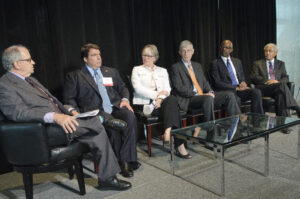 The third panel, which focused on fostering an innovation culture and research as a national priority, was moderated by Norman Ornstein,PhD, resident scholar at the American Enterprise Institute and a contributing editor for National Journal and The Atlantic. The panelists were Tony Coles, MD, chairman and CEO of Onyx Pharmaceuticals; Francis Collins, MD, PhD,director of the National Institutes of Health (NIH); Victor Dzau, MD, president and CEO of the Duke University Health System and chancellor for health affairs at Duke University; Robert Hariri, MD, PhD, CEO of Celgene Cellular Therapeutics; and Debra Lappin, JD, principal at Faegre BD Consulting and a patient advocate.
The third panel, which focused on fostering an innovation culture and research as a national priority, was moderated by Norman Ornstein,PhD, resident scholar at the American Enterprise Institute and a contributing editor for National Journal and The Atlantic. The panelists were Tony Coles, MD, chairman and CEO of Onyx Pharmaceuticals; Francis Collins, MD, PhD,director of the National Institutes of Health (NIH); Victor Dzau, MD, president and CEO of the Duke University Health System and chancellor for health affairs at Duke University; Robert Hariri, MD, PhD, CEO of Celgene Cellular Therapeutics; and Debra Lappin, JD, principal at Faegre BD Consulting and a patient advocate.
Ornstein began by laying out the current political state:Polarization in Washington has now spread to state governments, which is driving an “unfocused hostility toward government,” which ensnares government work of all kinds, no matter how beneficial. Heal so observed a lack of awareness by the public that sequestration is a decade-long plan.
Collins said he sees daily the paradox of the current situation: Scientific progress is at a level he couldn’t have foreseen 10 years ago, but it suffers from lackluster support in Congress. Sequestration alone will force NIH to cut 650 research projects in FY14. “Which of those investigators would have been the Nobel Prize winner we would celebrate in 20 years, we’ll never know,” he said.
“If we really believe that [medical research] is a noble enterprise,” Collins said, “we should be making noise. We haven’t activated our case the way we must.”
Dzau, a Research!America Board member, said he sees the effects of declining funding at Duke; the reverse brain drain has led to difficulty retaining assistant professors, who see more money and opportunity available in China.
Coles emphasized that sequestration and budget cuts affect multiple points on the research pipeline, from the top of the funnel, the NIH,to the FDA. For instance, two of Onyx’s products were the result of a total of 49 NIH grants. But he believes there turn on investment of basic research has been overshadowed by political gridlock. “I know we’re not having the right conversation, because we’ve now taken something that’s so fundamental to humanity which is the basic unlocking of the mechanisms of the body and of disease, and we’ve politicized it,” he said.”We’ve made it yet another political football, which tells me that we really are not having the right conversations.”
Hariri said that medical research has a good story to tell but the community is not speaking with a unified voice; our community appears all too divided. He’s optimistic,however, about increased collaboration between the public and private sectors. “I think the industry and NIH can advance their partnership dramatically, and the public will see this as not only new ways to treat disease, improve a life span, but also greater opportunity to improve” our gross domestic product.
Lappin, also a Research!America Board member, said the era of patient centricity is upon us, and patients must take their role seriously. “Patients are not just at the table anymore,but increasingly are setting it,” she said.We must “have the conversation about how we set disease priorities for research, tough conversation that we can’t” shy away from so people understand that patients are part of a force for change.
On the subject of public-private partnerships, Coles said they are important but are not sufficient and cannot replace government-supported research. Dzau said that a true PPP, which would involve government, industry, academia and patients, could succeed if it were a true national priority. World War II is one such example; another is the space race.Dzau pointed out the end result of the space race: hundreds of companies were formed as a result of America’s sustained push to get to the moon. That analogy,he said, should provide reassurance to those worried about intellectual property issues.
And Collins noted that bringing together top scientists from both the public and private sectors is critical to identifying the right targets for the next generation of drug development. He cited the BRAIN Initiative as an example of a public-private partnership that could be “inspiring” and “ground-breaking.”
Sponsors
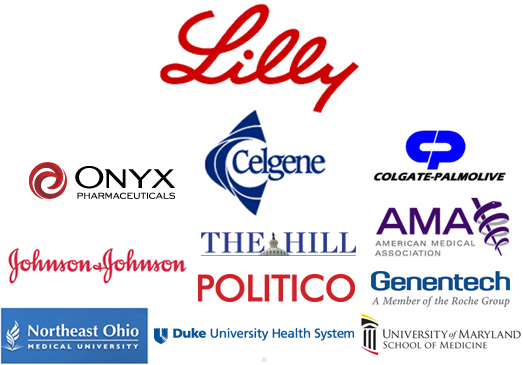
Watch video highlights of the panels, here.




